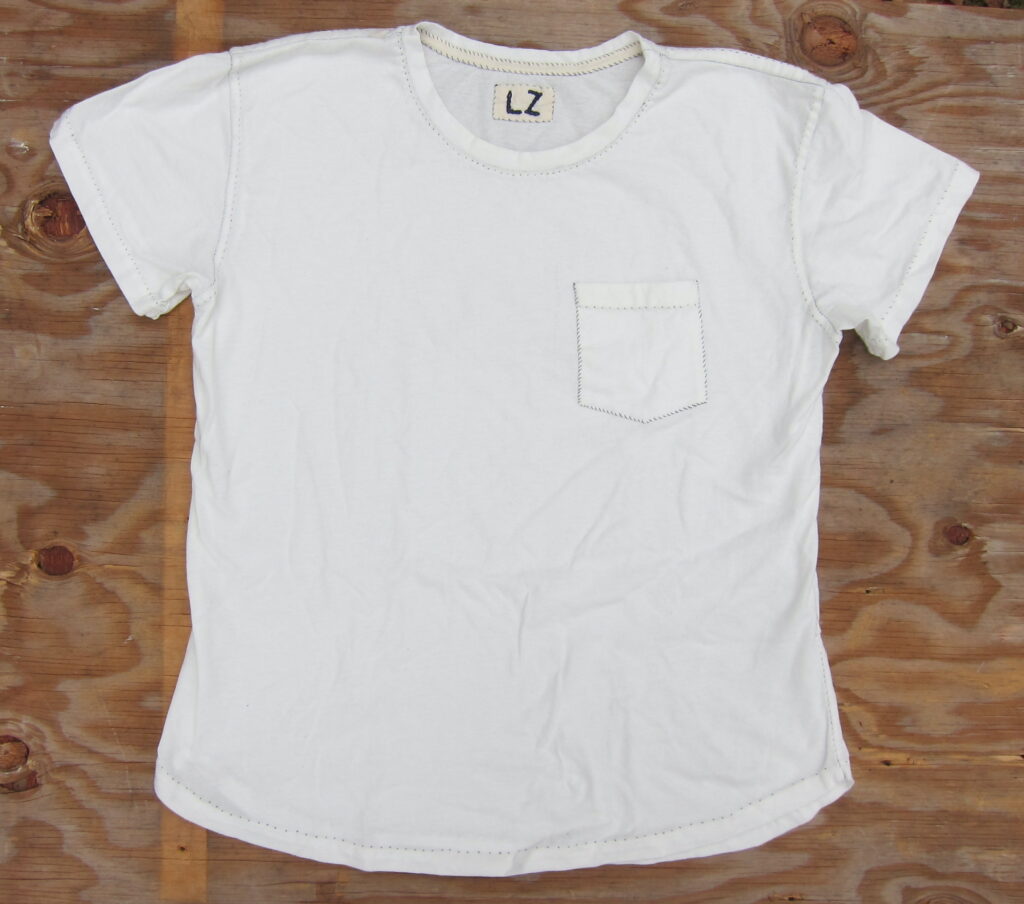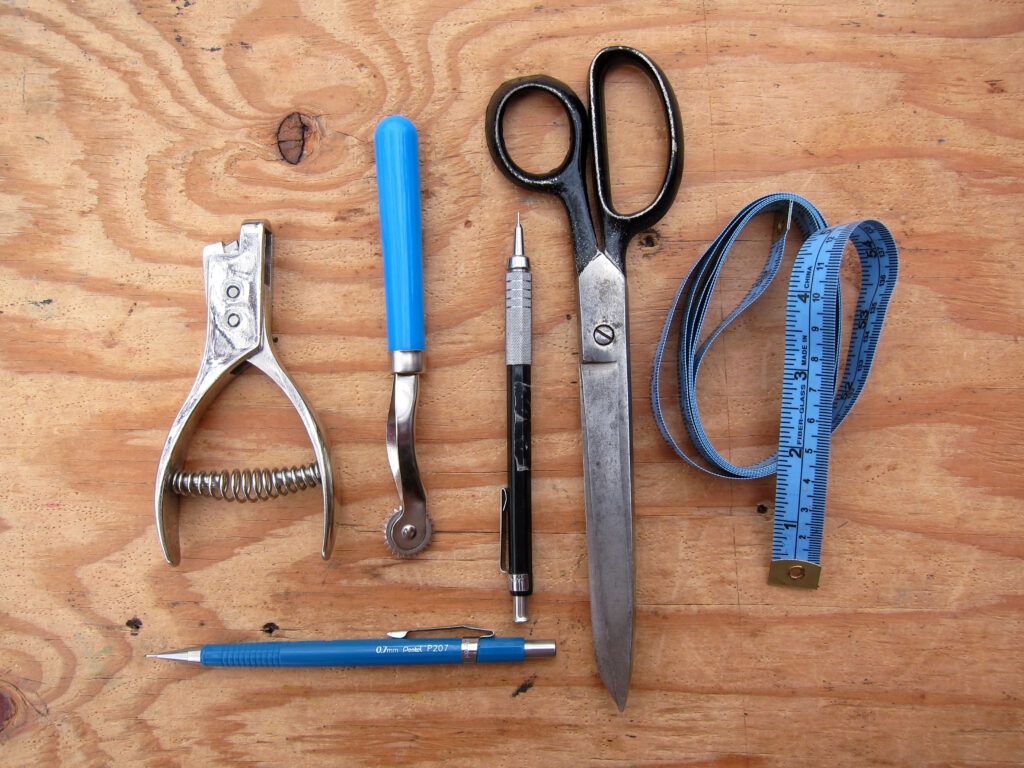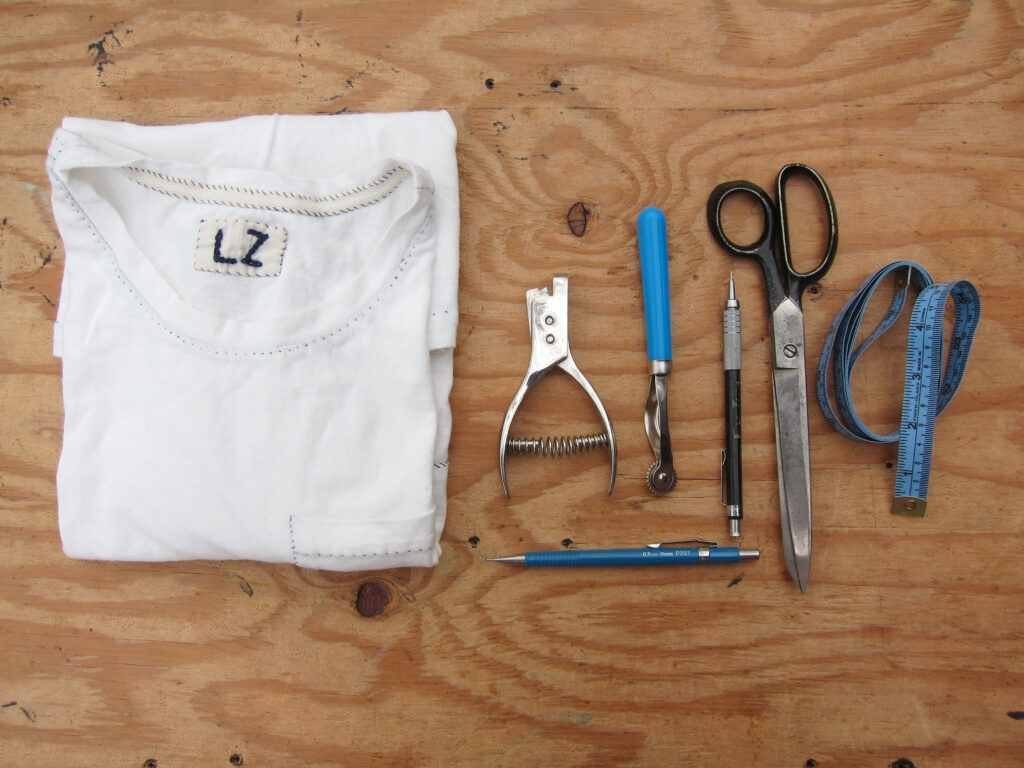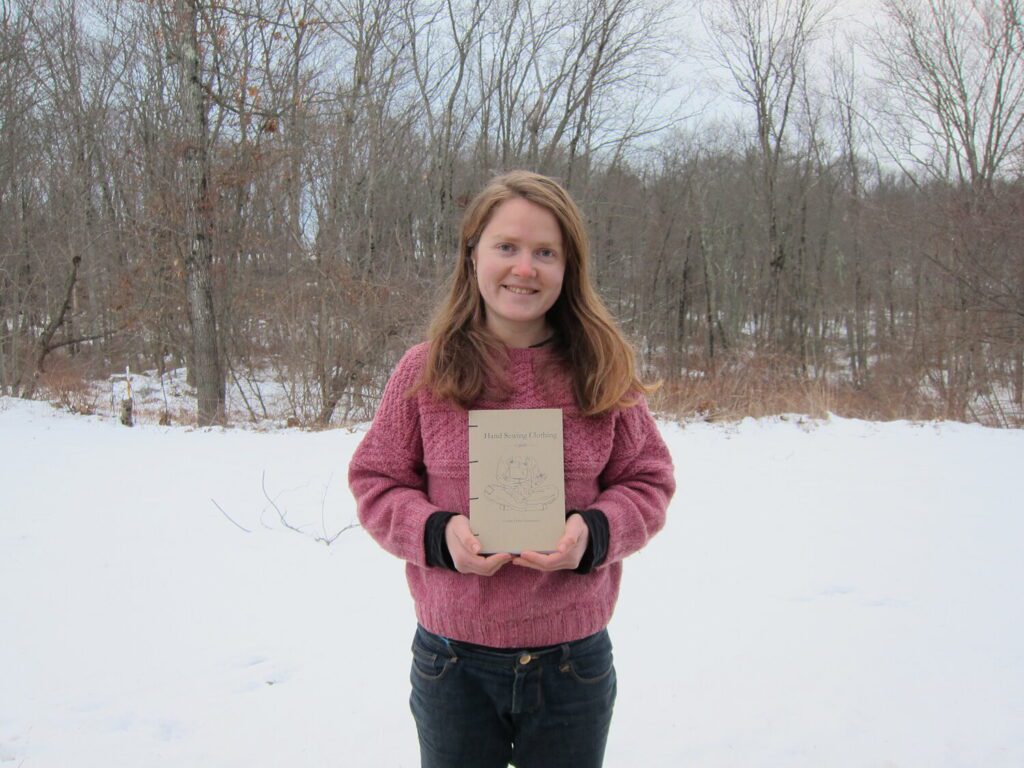

Learn to make your own t-shirt pattern, custom-fit to your body’s measurements and to your own fit and style preferences. Embrace the empowering skills of patterndrafting, and see where your pattern journey will take you!
In this three-session live Zoom class, taught by Louisa Owen Sonstroem, you will learn how to take measurements from your own body and from stretchy knit clothing that you already love to wear. You’ll be able to make your own choices regarding fit and style. Then you’ll apply your measurements to paper and draft out pattern pieces for a truly custom t-shirt. If you’d like, you can cut and baste together a test garment, assess the fit, and make some pattern tweaks to ensure that the final garment will be a joy to wear.
This patternmaking course will take place over three sessions, and will consist of:
- Three live, virtual stitching classes with Louisa
- Access to a private platform group for questions and sharing
Please note that this class will include instruction on basting together a test garment, but it will NOT include detailed instruction on stitching the final t-shirt. If you’re interested in continuing on and learning how to permanently hand-stitch a t-shirt, please see the Hand Sewn T-Shirt Class taking place in June.
Dates
Saturdays, April 2nd, 9th, and 23rd
Time
11am – 1:30pm ET
Location
Zoom, a link will be sent to participants
the day before class.
Cost
$300
This class is part of the Hand-Sewn Wardrobe Basics Series. You can purchase the entire series here: https://tatter.org/events/hand-sewn-wardrobe-basics-series/

CLASS MATERIALS
To draft your t-shirt pattern, you will need:
- Large sheets of paper (large pads of newsprint are good, or rolls of medical paper, or the backside of wrapping paper, but you can also tape together printer-size sheets)
- Clear gridded ruler
- Tape measure
- A few yards of yarn or string
- Tape (matte clear tape like Scotch Magic Tape is good, but other types will work as well)
- Sharpened pencil and good eraser
- Paper scissors
- Straight pins
- Carpeted floor, an old towel, large flattened cardboard box, or other soft surface for pricking pins through
- Pattern weights (you can use rocks, dumbbells, soup cans, or other heavy objects)
- A couple of safety pins
- 2 or 3 t-shirts or other stretchy tops or dresses that fit you reasonably well
- Large, flat work surface (a large table or the floor)
- Access to a mirror
- Optional: yardstick, tracing wheel, camera (a phone camera will be perfect)
- If you wish to cut and baste a test fit garment, then you’ll also need: fabric shears, thread, sewing needle, a fabric-marking tool such as a marker or pencil, and at least 2 yards of knit fabric that is similar in fiber content and stretchiness to what you will use for the final garment.


OUR TEACHER
Louisa Owen Sonstroem
Louisa Owen Sonstroem believes there is little more powerful than working with one’s hands, because manual skills are empowering, enduring, and slow. Whether she is drafting sewing patterns with a pencil and paper, hand-sewing “slow fashion” clothing, or foraging wild plant fibers to spin on a drop spindle, Louisa relishes using primitive tools in sophisticated ways.
Louisa holds a B.A. from the University of Connecticut and an additional degree from the Fashion Institute of Technology, where she studied patternmaking and fashion design. She also studied patterns at RISD and MassArt. She has worked in the garment industry for several years, most recently in technical design at Macy’s and now Eileen Fisher. During her time at Macy’s she also ran a weekly employee mending workshop, building skills, community, and sustainable momentum.
You can find Louisa on Instagram @louisaowensonstroem
